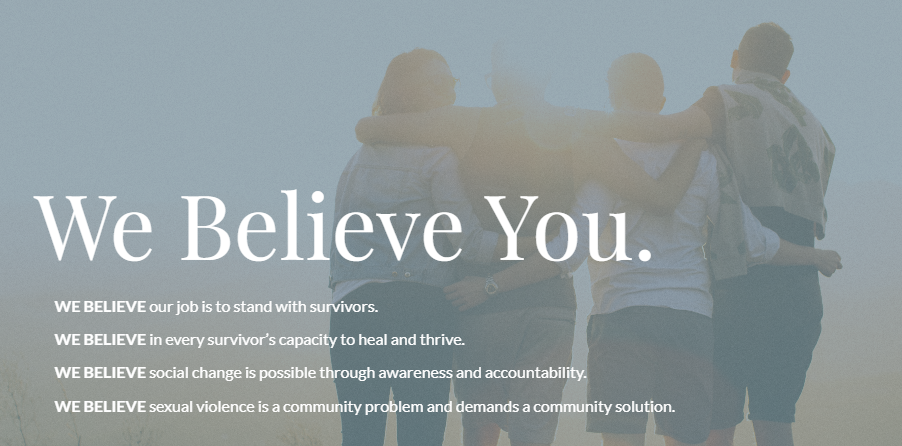Sexual Assault Awareness Month

This April marks the 22nd anniversary of Sexual Assault Awareness Month. A month intended to focus awareness on the epidemic that is sexual violence and to inspire all of us toward action. The National Crime Victimization Survey tells us that in this country every 68 seconds someone is sexually assaulted and every 9 minutes one of those people is a child. That means that during the fifteen minutes it takes you to stop in at your local coffee shop, grab an iced coffee and a muffin, approximately 13 people will have their lives forever changed by sexual violence. These numbers tell me that almost every single American has been directly impacted by sexual violence. If not themselves, someone very close to them has experienced this violation.
Awareness of these facts is vital. It is the first step. Without it, where would any of us know where to start? However, I would argue that there is no amount of educating about facts and statistics that will prevent sexual violence from happening or change how we as individuals and communities respond to a survivor when it does. Because it is not the statistics we’ve memorized that shape our response to those who have experienced sexual assault and abuse but rather what we believe about both the survivor and the perpetrator. These beliefs are ingrained in our societal fabric so much so that a huge part of the work our agency does is challenge those long held beliefs and point out how those very beliefs may be perpetuating a culture that allows sexual violence not only to exist but to thrive.
As author and gender-based violence activist Jackson Katz stated, “Individual batterers or rapists or sexual harassers don’t just emerge out of a swamp; they act out larger systemic forces”. He said, “For us to dramatically reduce domestic violence, sexual assault and harassment, we have to change the social norms that underlie those behaviors.”
If she was really afraid, why didn’t she scream? They had already had consensual sex so he couldn’t have raped her. He didn’t have any injuries so it couldn’t have been sexual assault. She should have known better than to have 2 drinks, what did she expect? That is not how a lady behaves. That is not how a real man acts.
The work to shift these types of beliefs does not happen overnight nor does it happen because of one month of dedicated national awareness. I feel certain that not one individual or organization involved in these efforts thinks that awareness is enough. The work has always been about challenging these long held social norms to not only deepen an individual’s understanding of sexual violence but the larger community’s as well.
As we recognize this Sexual Assault Awareness Month, I wish that I could give you a top five list of what you can do to not only increase awareness but inspire action. Of course, it is not that simple. What I can do is challenge you to take a deeper look at your long-held beliefs about sexual violence and those who have survived it. Challenge you to consider that it is not the job of the victim to stop rape from happening. Challenge all of us to recognize that sexual violence does not have to be a foregone conclusion and we can make a change.
I’ve never met anyone who believes that rape is acceptable, but I have met far too many people who believe that the victim must have done something to provoke it or certainly could have been more vigilant and prevented it. This month let’s turn our gaze inward and take a hard look at our own personal beliefs and values. Changing social norms starts with us. Let it be this awareness that inspires us to action.
Amy Jones, MA, LPC-S, is the current CEO of the Dallas Area Rape Crisis Center
